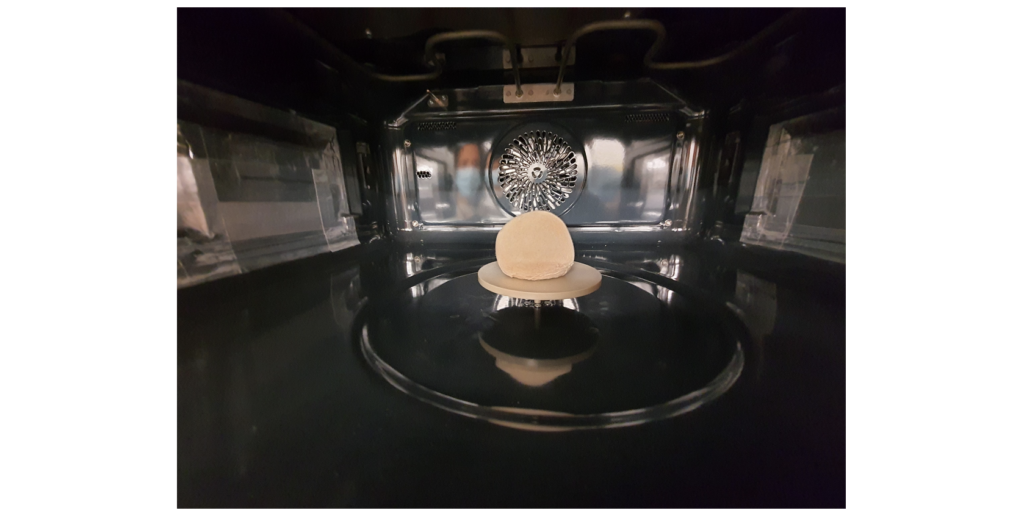Send us your feedback
Here you can send us feedback on the Maxess-website. Please describe the problem or what’s missing in a clear way, and on what page you found the issue. Thank you so much for your help!
More energy-efficient bread baking with synchrotron microtomography
Increased energy efficiency during bread baking can save time and energy, lower greenhouse gas emissions, and save money. Scientists from Finax and researchers from RISE, the Faculty of Engineering at Lund University, and MAX IV used time-resolved synchrotron micro Tomography to explore ways to make bread baking more energy efficient.
Bread is a worldwide staple food, and baking industries across the globe supply food to millions of consumers every day. The oven is the largest energy consumer in industrial bakeries, leading more companies to explore new ways of baking bread, such as microwave-convective baking.
Microwave-convective baking offers an energy-efficient way to bake bread in a shorter processing time. It could potentially help the industry overcome the challenge of reducing baking times while at the same time maintaining desired bread volume and quality properties.
The technology also makes it possible to achieve good bread quality in terms of texture, how it feels in the mouth and its porosity. Yet, knowledge gaps still exist.
Learning about bread’s elasticity and bubble formation using synchrotron X-rays
Will the air bubbles have time to form in the dough with microwave baking? This process is vital to creating a loft and desirable structure. How will the short processing time affect water distribution between starch granules and gluten? More knowledge of water distribution is crucial since it will influence the bread’s elasticity and bubble formation.
Synchrotron X-ray micro Tomography (SRμCT) can answer some of these questions since the technique, with its high temporal and spatial resolution, makes it possible to perform an in-situ experiment to study the volume expansion that takes place during bread baking.
A purpose-built oven enabling in-situ experiments
For the experiment, researchers from Finax, RISE, the Faculty of Engineering at Lund University, and MAX IV built a tailor-made microwave-convective oven to perform SRμCT experiments during baking at the TOMCAT beamline of the Swiss Light Source at PSI in Switzerland.

Ahead of the experiment, a pre-study was conducted to identify relevant processes and formulation conditions before the three-day beamtime experiment began.
Loaves of bread made from three different flour types with varying protein content were baked in the oven using microwave, microwave-convective and convective heating. All the samples were prepared in advance, frozen, and brought to the facility.

Visualising with the TOMCAT beamline
The results showed that it is possible to determine a timeline of the bubble structure in the dough before, during, and after baking using the TOMCAT beamline. The data captured during the experiment provided the scientists and researchers with a visual representation in the form of 3D structure images of how the bubbles formed, their size, and the bread’s porosity and shape.

Reconstructed dough slices before baking (left) and the resulting convectively baked bread (right). Credit: Finax/TOMCAT, SLS, PSI.
The experiment also showed that the baking method and flour type significantly influence the bubble growth kinetics and the final bread structure.
Sustainable and better-tasting bread with synchrotron-based research
The collaboration produced valuable results about how bread can be baked with more sustainable microwave-convective technologies, specifically in terms of the methods and flours most suited to shorter baking processes.
The results are also significant since they provide a better understanding of how water is transported in bread and new knowledge that can support the development of processes to make bread fresher and, at the same time, extend its shelf life.
Contact Partners
Case Details
Finax
LSRI-initiative at RISEDivision of Solid Mechanics




